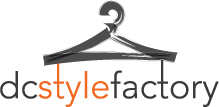The Basics
I had a blast styling one of my clients recently. She is a mom of two young girls, works full time, AND is in school! Talk about busy!
When we first met, she struggled putting together outfits because she felt like her wardrobe lacked essential items she could wear to work, school and on the weekends with her kids that also fit her style aesthetic. She is a mix of Classic, California Cool and Rocker. After auditing her wardrobe, we found so many wonderful basic pieces to create a versatile wardrobe that would still work with her mix of styles!
A successful wardrobe depends upon a foundation of pieces that act as a backbone to every outfit. So many of our clients have asked us about wardrobe essentials that I’ve even done a post about budget friendly wardrobe essentials. So if you’re looking to create a base wardrobe, here’s how:
1: Invest in quality fabrics and tailoring. When building a base wardrobe, you want it to last as long as possible. These pieces will always be in style so there is no reason why it wouldn’t last. These days with fast-fashion, retail floors are flooded with low-quality clothing. Opt for basics that are won’t lose their shape after a few washes, won’t pill, and won’t rip at the seams. My client had some great cotton button-down shirts that we mixed and matched into multiple looks for her mom life and student life. They had stood the test of time — years of wash and wear. Here are some quick ways to “check” for quality of garments like a pro:
- Looking at fabric content is one way to gauge quality. Opting for natural fibers can be the first step (wool, cotton, etc.). However, just because something is 100 percent cotton does not mean it is quality.
- Go one step further and feel the garment to see that the garment has a dense weave. The more fiber the better.
- Hold it up to the light to check the density.
- Look at stitching and finishing. Check seams on pants, hems of shirts, hems on skirts, etc. If the seams look loose or sloppy, these are warning signs.
- Look at buttonholes. If they look sloppy, this is also a sign of poor quality.
2. Select neutral colors for basics. Your wardrobe essentials should consist mainly of neutral tones, meaning colors that are versatile enough to go with everything you own. Having a neutral color palette is handy when you want to balance out brightly colored or printed items. You can also mix them together, creating a lux, chic, polished look. Some of our favorite primary neutrals are grey, black, and camel. Some great secondary neutrals are army green and oxblood. My client had a camel blazer that we used in more than six different work and weekend looks. She had a workhorse essential and she didn’t even know it!
3. Start with simple shoes and accessories. Choose bags, shoes and jackets that are in camel, army green, taupe, etc. These patterns, textures and colors go with everything and add interest without a lot of planning or thought. We want you to get out the door in the morning easily! A pair of ankle boots, a long necklace and pointed toe metallic or animal print pumps are all versatile and stylish — but not trendy — options that will effortlessly finish each look no matter the occasion! My client had all these items already in her closet and just didn’t know how handy they could be!
This mom was ecstatic when she saw she had many of these essentials in her wardrobe (we added a few she was missing)! She has emailed me to tell me how confident she has become wearing pieces she owns in all these new, but easy ways!

